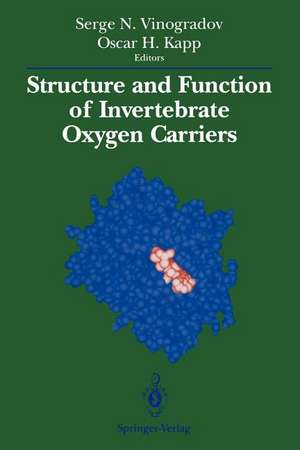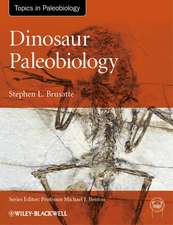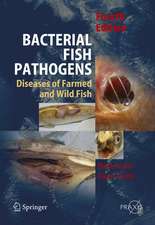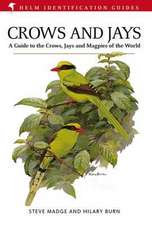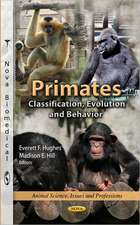Structure and Function of Invertebrate Oxygen Carriers
Editat de Serge N. Vinogradov, Oscar H. Kappen Limba Engleză Paperback – 7 oct 2011
Preț: 393.13 lei
Nou
Puncte Express: 590
Preț estimativ în valută:
75.23€ • 78.74$ • 62.61£
75.23€ • 78.74$ • 62.61£
Carte tipărită la comandă
Livrare economică 31 martie-14 aprilie
Preluare comenzi: 021 569.72.76
Specificații
ISBN-13: 9781461278252
ISBN-10: 1461278252
Pagini: 384
Ilustrații: XXV, 352 p.
Dimensiuni: 155 x 235 x 20 mm
Greutate: 0.54 kg
Ediția:Softcover reprint of the original 1st ed. 1991
Editura: Springer
Colecția Springer
Locul publicării:New York, NY, United States
ISBN-10: 1461278252
Pagini: 384
Ilustrații: XXV, 352 p.
Dimensiuni: 155 x 235 x 20 mm
Greutate: 0.54 kg
Ediția:Softcover reprint of the original 1st ed. 1991
Editura: Springer
Colecția Springer
Locul publicării:New York, NY, United States
Public țintă
ResearchDescriere
Oxygen binding proteins are large multi unit proteins ideally suited for the study of structure function relationships in biological molecules. This book, based on a Symposium at the Xth International Biophysics Congress in 1990, provides a synthesis of recent advances in our knowledge of invertebrate oxygen carriers such as hemoglobins, hemocyanins, and hemorythrins. Comprehensive reviews are combined with new research results of importance to all biochemists and molecular biologists interested in oxygen carriers in general, their gene structure and comparative biochemistry. Of particular value are the studies of invertebrate oxygen binding proteins which perform their function and have structures vastly different from the vertebrate hemoglobins and myoglobins, as well as numerous examples of modern molecular techniques as applied to research on this diverse group of proteins.
Cuprins
I. Quaternary and Three-Dimensional Structure.- 1 The Architecture of 4x6-meric Arachnid Hemocyanin.- 2 Static and Kinetic Studies on the Dissociation of Limulus polyphemus Hemocyanin with Solution X-Ray Scattering.- 3 The Di-decameric Hemocyanin of the Atlantic Murex Snail, Muricanthus fulvescens (Sowerby).- 4 Scanning Transmission Electron Microscopy (STEM) Studies of Molluscan Hemocyanins.- 5 Spectroscopic Analysis of Temperature-Induced Unfolding of the Hemocyanin from the Tarantula Eurypelma californicum.- 6 Subunit Structure of the Hemocyanin from the Arthropod OvaUpes catharus.- 7 Crosslinking with Bifunctional Reagents and its Application to the Determination of the Quaternary Structures of Invertebrate Extracellular Hemoglobins.- 8 Arthropod (Cyamus scammoni, Amphipoda) Hemoglobin Structure and Function.- 9 The Principal Subunit of Earthworm Hemoglobin is a Dodecamer of Heme-Containing Chains.- 10 Heterogeneity of the Products of Dissociation of Lumbricus terrestris Hemoglobin at Alkaline pH.- 11 Studies on the Dissociation of Eudistylia vancouverii Chlorocruorin.- II. Structure and Function.- 12 Nested Allostery of Arthropod Hemocyanins.- 13 Subunits and Cooperativity of Procambarus clarki Hemocyanin.- 14 Analysis of Oxygen Equilibrium Using the Adair Model for the Hemocyanin of Limulus polyphemus and the Hemoglobin of Eisema foetida.- 15 Structural and Functional Characterization of the Hemoglobin from Lumbricus terrestris.- 16 Interaction of Divalent Metal Ions with the Hemoglobin of Glossoscolex paulistus: an EPR Study.- 17 Oxidation of the Extracellular Hemoglobin of Glossoscolex paulistus.- 18 Kinetic Evidences for Slow Structural Changes in the Chlorocruorin from Spirographis spallanzanii.- 19 Scapharca inaequivalvis Hemoglobins: Novel Cooperative Assemblies of Globin Chains.- 20 High and Low Spin Forms of Oxidized Dimeric Scapharca inaequivalvis Hemoglobin.- 21 Aplysia Myoglobin: Involvement of Two Kinds of Carboxyl Groups in the Autoxidation Reaction.- 22 Aplysia limacina Myoglobin: Molecular Bases for Ligand Binding.- 23 Biophysical Characterization of Constituents of the Glycera dibranchiata Oxygen Transport and Utilization System: Erythrocytes and Monomer Hemoglobins.- 24 Oxygen Equilibrium Characteristics of Hemerythrins from the Brachiopod, Lingula unguis, and the Sipunculid, Siphonosoma cumanense.- 25 The Dynamics of Dioxygen Binding to Hemerythrin.- 26 Distribution of Hemerythrin’s Conformational Substates from Kinetic Investigations at Low Temperature.- III. Amino Acid and cDNA Sequences.- 27 Translation of the cDNA Sequence for the Polymeric Hemoglobin of Artemia.- 28 Structure of the Extracellular Hemoglobin of Tylorrhynchus heterochaetus.- 29 cDNA Cloning, Sequencing and Expressing the cDNA for Glycera dibranchiata Monomer Hemoglobin Component IV.- 30 Identification of the cDNA for Some of the Polymeric Globins of Glycera dibranchiata.- 31 The cDNA Sequences Encoding the Polymeric Globins of Glycera dibranchiata.- 32 Primary Structure of 440 kDa Hemoglobin from the Deep- Sea Tube Worm Lamellibrachia.- 33 Protozoan Hemoglobins: Their Unusual Amino Acid Sequences.- 34 Primary Structure of the Beta Chain of the Tetrameric Hemoglobin from Anadara broughtomi.- 35 Partial Amino Acid Sequence of Hemoglobin II from Lucina pectinata.- 36 The Globin Composition of Daphnia pulex Hemoglobin.- 37 The Hemoglobin of Ascaris suum: Structure and Partial Sequence of Domain 1.- 38 Nomenclature of the Major Constituent Chains Common to Annelid Extracellular Hemoglobins.- IV. Gene Structure and Physiological Role.- 39 Complete Nucleotide Sequence of a Hemoglobin Gene Cluster from the Midge Chironomus thummipiger.- 40 The Primary Structure of Several Hemoglobin Genes from the Genome of Chironomus tentans.- 41 The Structure and Function of Chironomus Hemoglobins.- 42 Transcriptional Control of Vitreoscilla Hemoglobin Synthesis.- 43 Hemoglobins of Eukaryote/Prokaryote Symbioses.- 44 Modulation of Oxygen Binding in Squid Blood.- 45 The Role of Heme Compounds in Sulfide Tolerance in the Echiuran Worm Urechis caupo.- Author Index.
